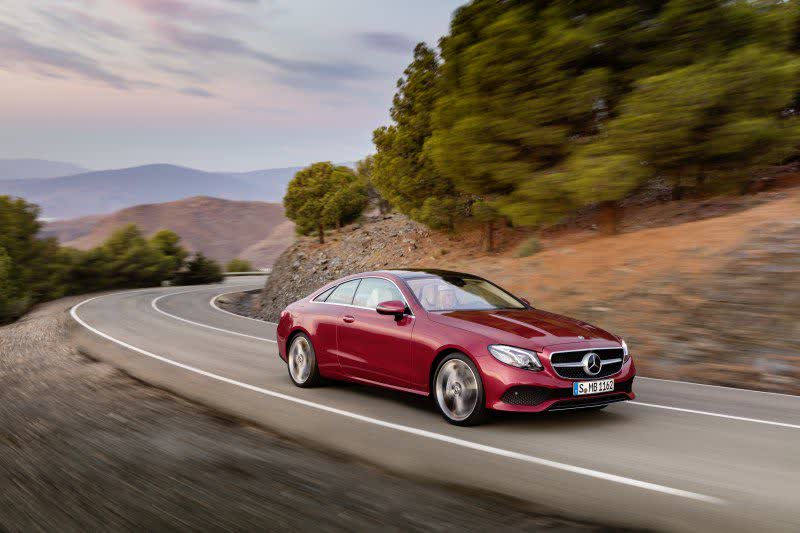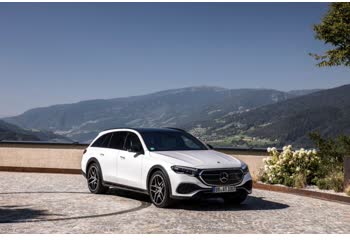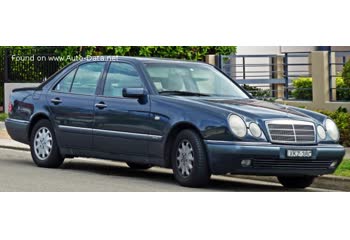Everything you need to know about specifications and performance - Mercedes-Benz E-class 2019 - E 200 (197 Hp) EQ Boost 9G-TRONIC

Overview:
What is the engine capacity of a Mercedes-Benz E-class 2019?
The engine capacity of the Mercedes-Benz E-class 2019 is 1991.
Mercedes-Benz E-class 2019 How many horsepower?
The engine power of the Mercedes-Benz E-class 2019 is 197 Hp.
What is the Mercedes-Benz E-class 2019 engine?
Mercedes-Benz E-class 2019 engine is M 264. (Click to see other cars using the same engine)
How much gasoline does a Mercedes-Benz E-class 2019 consume?
The Mercedes-Benz E-class 2019 consumes 6.2-6.6 liters of gasoline per 100 km
General:
Brand: Mercedes-Benz
Model: E-class
Generation:Coupe (C238)
Modification (Engine): E 200 (197 Hp) EQ Boost 9G-TRONIC
Start of production: 2019
End of production: 2020
Powertrain Architecture:MHEV (Mild Hybrid Electric Vehicle, power-assist hybrid, battery-assisted hybrid vehicles, BAHV)
Body type:Coupe
Seats: 4
Doors: 2
Engine:
Engine systems: Particulate filter
Power: 197 hp
Power per litre: 98.9 hp/l
Torque: 320 nm @ 1650-4000 rpm.
Engine Model/Code: m 264
Engine displacement: 1991
Number of cylinders: 4
Engine configuration: Inline
Number of valves per cylinder: 4
Fuel injection system: Direct injection
Engine aspiration: Twin-scroll turbo, Intercooler
Valvetrain: DOHC
Engine oil capacity: 6.6 l
Engine layout: Front, Longitudinal
Performance:
Fuel Type: Petrol (Gasoline)
Fuel consumption (economy) - urban: 8.0-8.6 l/100 km
Fuel consumption (economy) - extra urban: 5.1-5.5 l/100 km
Fuel consumption at Low speed (WLTP): 7 l/100 km
Fuel consumption at very high speed (WLTP): 8 l/100 km
Fuel consumption (economy) - combined: 6.2-6.6 l/100 km
Emission standard: Euro 6d-TEMP-EVAP-ISC
Acceleration 0 - 100 km/h: 7.6 sec
Acceleration 0 - 62 mph: 7.6 sec
Maximum speed: 237 km/h
Weight-to-power ratio: 8.4 kg/Hp, 118.7 Hp/tonne
Weight-to-torque ratio: 5.2 kg/Nm, 192.8 Nm/tonne
Acceleration 0 - 60 mph: 7.2 sec
Electric system:
Electric motor power: 14 hp
Electric motor location: Front, Longitudinal
Battery voltage: 48 V
Space:
Kerb Weight (kg): 1660
Max. weight (kg): 2270
Max load (kg): 610
Trunk (boot) space - minimum: 425 l
Permitted trailer load with brakes (12%): 1800 kg
Fuel tank capacity: 50 l
Permitted trailer load without brakes: 750 kg
dimensions:
Ramp-over (brakeover) angle: 9.5°
Length: 4826 mm
Width: 1860 mm
Height: 1430 mm
wheelbase: 2873 mm
Width including mirrors: 2055 mm
Front track: 1605 mm
Rear (Back) track: 1609 mm
Front overhang: 841 mm
Rear overhang: 1112 mm
Approach angle: 13°
Departure angle: 14.4°
Powertrain, Suspension and Brakes:
Drivetrain Architecture: The Internal combustion Engine (ICE) and electric motor drive the rear wheels of the car with the ability to work only in mixed mode.
Drive wheel: Rear wheel drive
Number of gears and type of gearbox: 9 gears, automatic transmission G-TRONIC
Front brakes: Ventilated discs
Rear brakes: Ventilated discs
Assisting systems: ABS (Anti-lock braking system)
Steering type: Steering rack and pinion
Power steering: Electric Steering
Tires size: 225/55 R17
Wheel rims size: 7.5J x 17
Front suspension: Independent multi-link suspension
Rear suspension: Independent multi-link suspension
See also

Last generation.
Its production began in 2023 until Now

Other generation.
Its production began in 1999 until 2000

Same production year and almost the same engine capacity.
Its production began in 2019 until Now

Write a comment